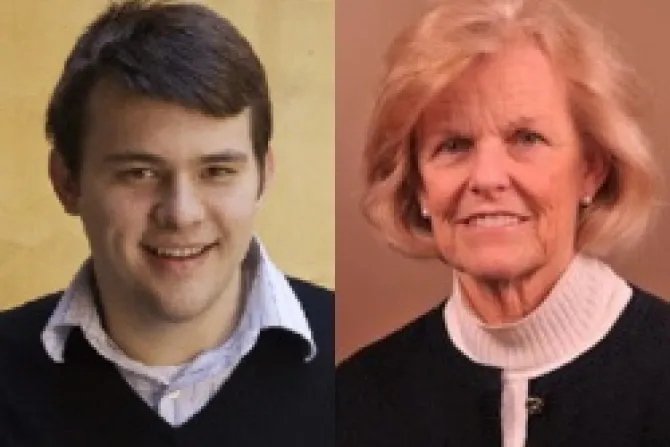New York City, N.Y., Jan 10, 2014 / 04:18 am
The story of the U.S. Catholic Church in the early 21st century is one of excitement and renewal, say two authors of a book that examines successful dioceses, bishops and priests.
"The priesthood is growing. There are also vibrant signs of life among the laity and throughout the Church. Those stories need to be told," Christopher White, the director of education and programs at the California-based Center for Bioethics and Culture, told CNA Dec. 12.
White is the co-author of "Renewal," a new book from Encounter Books which makes the case that Catholicism is recovering from decades of "faithless practice" and confusion.
He said this recovery is especially evident in parishes that express "a stronger Catholic identity."
His co-author, Anne Hendershott, who is a sociology professor and director of the Veritas Center for Ethics in Public Life at Franciscan University of Steubenville, said writing the book has given her new appreciation for U.S. Catholicism.
"I haven't been as excited about the religion as I am now," she said. "There have been times when I was discouraged and I believed the media presentations of the religion as being in decline."
The book "Renewal" focuses on areas where the Catholic Church is showing revitalization. Ordination rates to the priesthood are at a 20-year high, and the average age of new priests continues to decline. Ten years ago, the Church struggled under the weight of the clergy sexual abuse scandal; now many seminaries are at full capacity.
The new generation of priests consists of men who are "wholly committed" to their vocation and consider celibacy "a grace and benefit to ministry," White said.
"They are unafraid to be counter-cultural," he added. "I think in previous generations...you had individuals that in some ways wanted to straddle both worlds and in some ways make the priesthood and the Church as well conform to the ways of the world."
He drew on his own experience as a convert to Catholicism, which was "very different" from what he had heard about the Catholic faith in his upbringing and in cultural commentary.
"If you would have asked me 10 years ago to describe the Catholic Church, [I would have said it was] a dated institution with a dying membership whose teachings were confusing, whose members were negligent in the practice of their faith."
Attending church in Manhattan, he instead found "very solid" parishes with "dynamic" parish priests.
Both John Paul II and Benedict XVI helped provide "definitive interpretations" of the Second Vatican Council, the book's authors continued. Unity and outspokenness among the bishops have increased, while dissenting Catholic factions have declined in prominence.
"Catholicism has always stood for something, but we didn't always have bishops who were able to project that very well," Hendershott said. "They seemed reticent, reluctant to talk about the truth of the religion. And now we have all these great priests and bishops that are talking about it. And they're not
embarrassed about it, they're not ashamed."
The book emphasizes the role of bishops in creating a fruitful culture in their dioceses. It examines dioceses that have "transformational leaders," outlining their best practices.
Bishops who are clear about Catholic teaching and "bold in defending the Church in the public square" attract more people, White said.
Hendershott stressed that Catholicism is not simply about morality and the Catechism. Rather, people are "drawn to the beauty of the religion."
In dioceses where bishops can express this beauty through music, liturgy, and homilies, she said, "you are going to have flourishing vocations."
She added that a demanding form of religion, rather than a lax one, tends to attract.
"The more a religion asks of believers, the more vibrant that religion will be. There's got to be a reason for people to be part of a religion, or else they'll just go to the movies," she said, citing sociologist Rodney Stark.
Hendershott and White both see room for continued improvement, especially in Catholic higher education.
"Renewal is on the way, but we're not fully there yet," White said.
Many institutions of Catholic higher education need to do better in helping pass on the faith to future generations and encouraging new vocations, he said.
"We've got to get that right," he emphasized.




